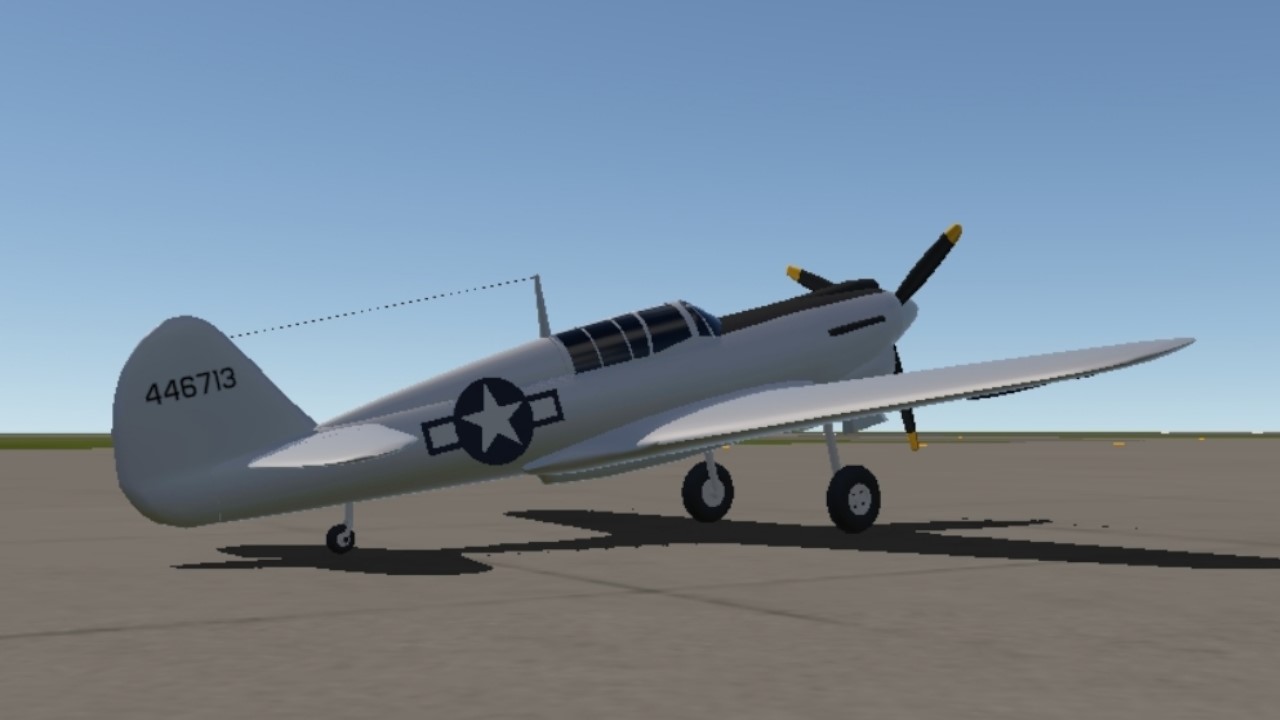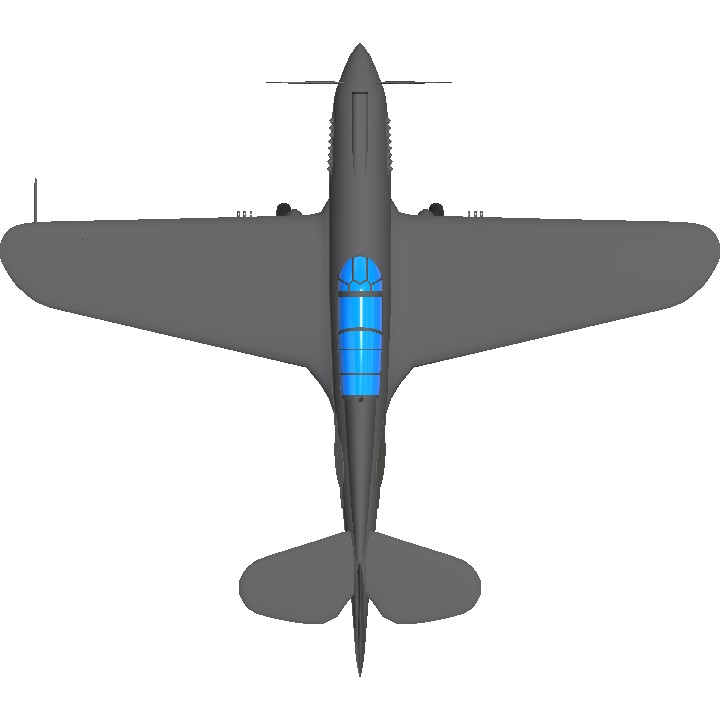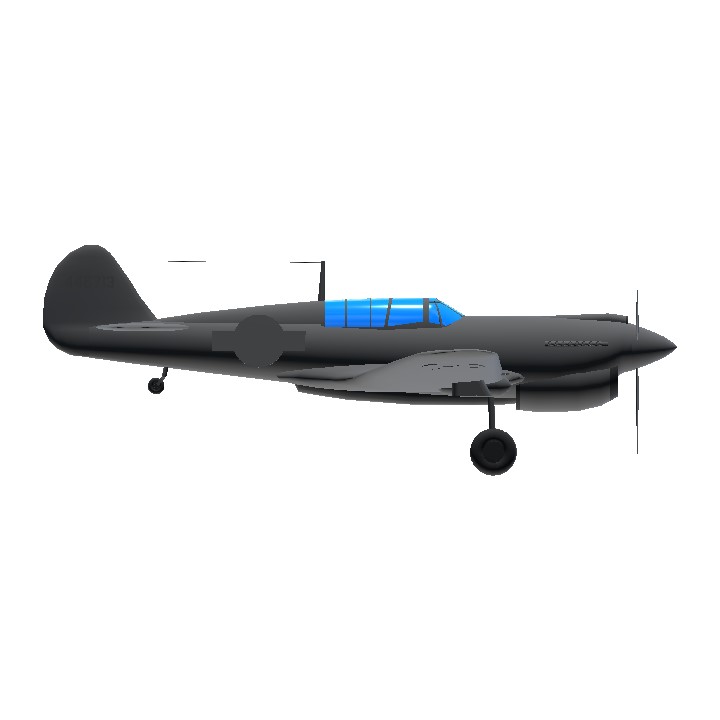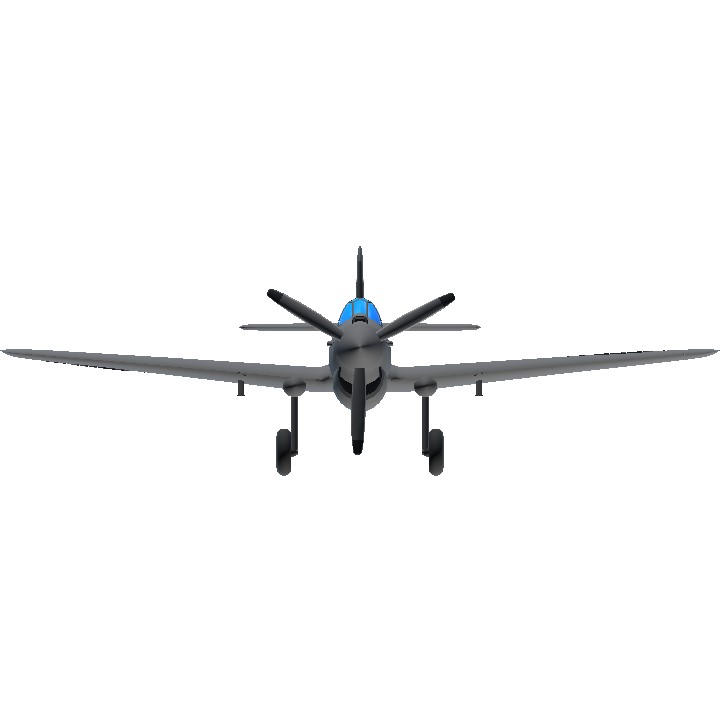Original author: Spark1645
Curtiss P-40 Warhawk
The Curtiss P-40 Warhawk was an American single-engined, single-seat, all-metal fighter and ground-attack aircraft that first flew in 1938. The P-40 design was a modification of the previous Curtiss P-36 Hawk which reduced development time and enabled a rapid entry into production and operational service. The Warhawk was used by most Allied powers during World War II, and remained in frontline service until the end of the war. It was the third most-produced American fighter, after the P-51 and P-47; by November 1944, when production of the P-40 ceased, 13,738 had been built, all at Curtiss-Wright Corporation's main production facilities at Buffalo, New York.
P-40 Warhawk was the name the United States Army Air Corps adopted for all models, making it the official name in the United States for all P-40s. The British Commonwealth and Soviet air forces used the name Tomahawk for models equivalent to the P-40B and P-40C, and the name Kittyhawk for models equivalent to the P-40D and all later variants.
P-40s first saw combat with the British Commonwealth squadrons of the Desert Air Force in the Middle East and North African campaigns, during June 1941. No. 112 Squadron Royal Air Force, was among the first to operate Tomahawks in North Africa and the unit was the first Allied military aviation unit to feature the "shark mouth" logo, copying similar markings on some Luftwaffe Messerschmitt Bf 110 twin-engine fighters.
The P-40's lack of a two-stage supercharger made it inferior to Luftwaffe fighters such as the Messerschmitt Bf 109 or the Focke-Wulf Fw 190 in high-altitude combat and it was rarely used in operations in Northwest Europe. Between 1941 and 1944, the P-40 played a critical role with Allied air forces in three major theaters: North Africa, the Southwest Pacific and China. It also had a significant role in the Middle East, Southeast Asia, Eastern Europe, Alaska and Italy. The P-40's performance at high altitudes was not as important in those theaters, where it served as an air superiority fighter, bomber escort and fighter bomber. Although it gained a postwar reputation as a mediocre design, suitable only for close air support, recent research including scrutiny of the records of individual Allied squadrons, indicates that the P-40 performed surprisingly well as an air superiority fighter, at times suffering severe losses but also taking a very heavy toll of enemy aircraft, especially when flown against the lightweight and maneuverable Japanese fighters like the Oscar and Zero in the manner recommended in 1941 by General Claire Chennault, the AVG's commander in southern China. The P-40 offered the additional advantage of low cost, which kept it in production as a ground-attack aircraft long after it was obsolete as a fighter. In 2008, 29 P-40s were airworthy.
P-40N
P-40N (manufactured 1943–44), the final production model. The P-40N featured a stretched rear fuselage to counter the torque of the larger, late-war Allison engine, and the rear deck of the cockpit behind the pilot was cut down at a moderate slant to improve rearward visibility. A great deal of work was also done to try and eliminate excess weight to improve the Warhawk's climb rate. Early N production blocks dropped a .50 in (12.7 mm) gun from each wing, bringing the total back to four; later production blocks reintroduced it after complaints from units in the field. Supplied to Commonwealth air forces as the Kittyhawk Mk IV. A total of 553 P-40Ns were acquired by the Royal Australian Air Force, making it the variant most commonly used by the RAAF. Subvariants of the P-40N ranged widely in specialization from stripped down four-gun "hot rods" that could reach the highest top speeds of any production variant of the P-40 (up to 380 mph), to overweight types with all the extras intended for fighter-bombing or even training missions. The 15,000th P-40 was an N model decorated with the markings of 28 nations that had employed any of Curtiss-Wright's various aircraft products, not just P-40s. "These spectacular markings gave rise to the erroneous belief that the P-40 series had been used by all 28 countries." Survivors redesignated as ZF-40N in June 1948.
modify
Machine gun data modification
Specifications
Spotlights
- dINE 2.3 years ago
- Bryan5 2.3 years ago
- ChihiroFujisaki 2.3 years ago
General Characteristics
- Successors 3 airplane(s) +42 bonus
- Created On Android
- Wingspan 37.6ft (11.5m)
- Length 33.1ft (10.1m)
- Height 12.0ft (3.7m)
- Empty Weight N/A
- Loaded Weight 8,918lbs (4,045kg)
Performance
- Power/Weight Ratio 2.519
- Horse Power/Weight Ratio 0.897
- Wing Loading 27.9lbs/ft2 (136.0kg/m2)
- Wing Area 320.1ft2 (29.7m2)
- Drag Points 6621
Parts
- Number of Parts 236
- Control Surfaces 5
- Performance Cost 819







Oh...
Por discord?
@Anthony747800 1645 gave me a copy of his unpublished work, his own has been lost.
@ATR105 oh
@KoreanAircraftliner Sorry, I'm not really good at making airplanes
Can you make aeroflot An-124?
The best
N o i c e 👍
Where did you get this plane?